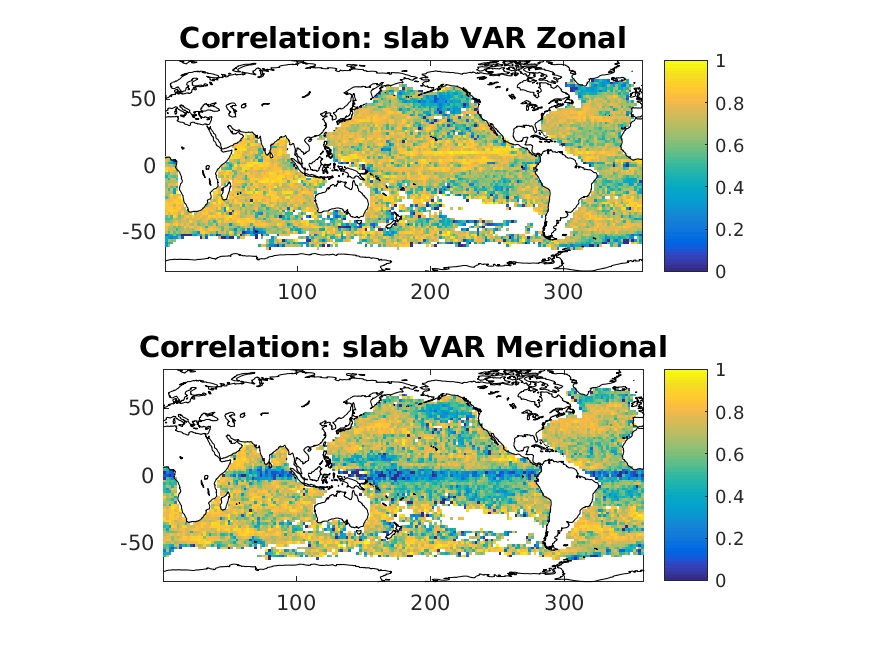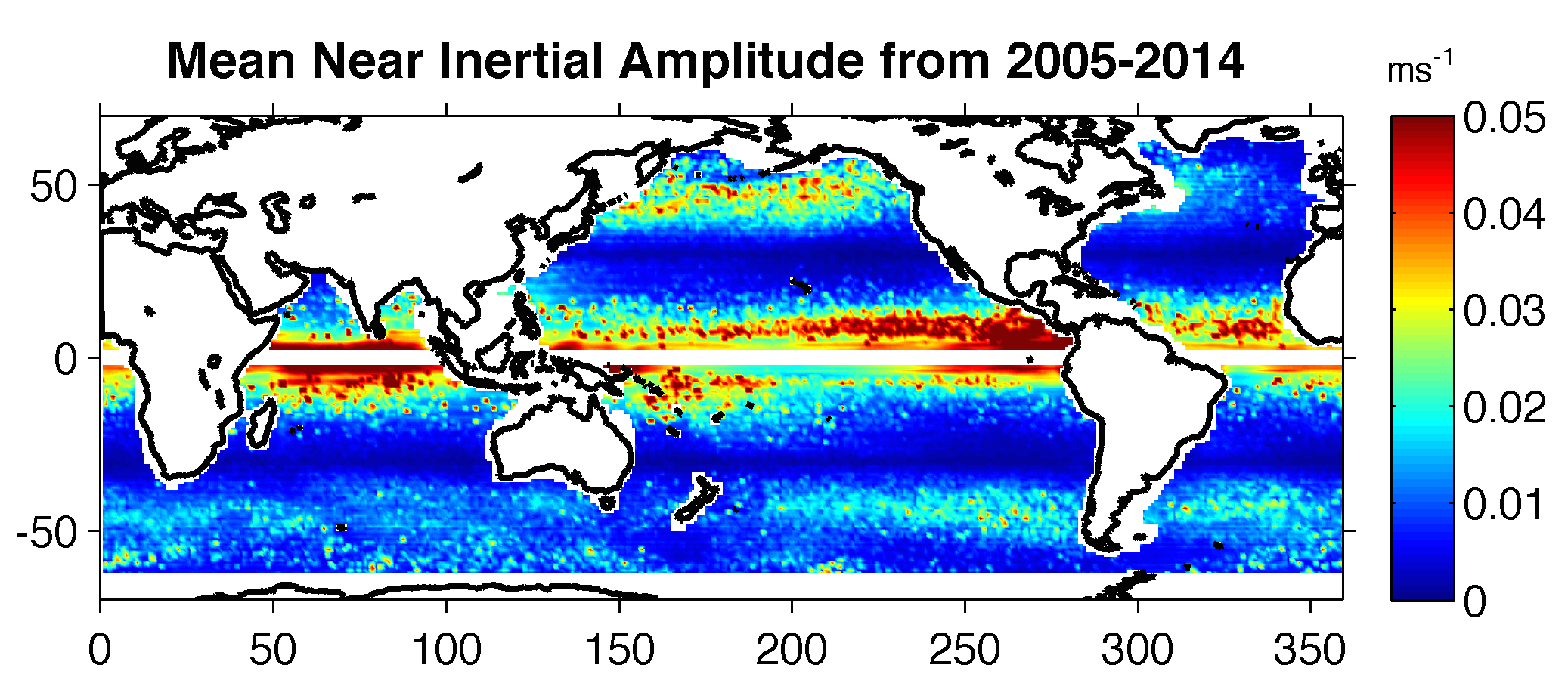Inertial Motions
The simplest method to incorporate time dependence and therefore inertial motions into a wind-driven upper ocean is the damped slab model. In the damped slab, the unsteady Ekman solution is solved using simple Rayleigh damping, with damping time scale 1/r:
The damped slab model was run using 6 hour ERA Interim winds (http://www.ecmwf.int/en/research/climate-reanalysis/era-interim) and monthly Argo mixed layer depths (http://apdrc.soest.hawaii.edu/datadoc/argo_iprc.php). A variable value was used for the damping time scale, based on analyses of drifter trajectories, with a typical damping time scale of 2 days. More details will be provided in an upcoming publication. This was done for ten years within the availability of Argo data: 2005-2014. Then, OSCAR geostrophic velocities were added to the wind-driven damped slab motions. Drifter velocities from the Global Drifter Program (http://www.aoml.noaa.gov/phod/dac/gdp_objectives.php ) were used to validate the final total surface current. To perform the comparison between Lagrangian drifters and gridded velocities, both drifter and model currents are first daily binned. This is an imperfect way of removing inertial oscillations, but has been used as the optimal compromise between retaining information and removing most of the inertial signal without hidden bias. Model currents are then mapped to drifter locations for direct comparison of currents. In the figure are sample results of a 10-year damped slab run using the variable damping time scale. Correlations between the model currents and in situ drifter currents are shown for each of the zonal and meridional components of the flow.

Although the correlations are high, the OSCAR model still provides better matches with drifter data. Nonetheless, information on the inertial motions missing in the standard OSCAR model is useful.

The ten years of inertial oscillation amplitudes, averaged into daily values are available to download as Matlab files. Amplitudes only are provided, since the phase is unreliable. Time is in Matlab datenum format. Since the inertial period becomes inifinite near the equator, values are not provided within 2 degrees of the equator.
Inertial Amplitudes 2005
Inertial Amplitudes 2006
Inertial Amplitudes 2007
Inertial Amplitudes 2008
Inertial Amplitudes 2009
Inertial Amplitudes 2010
Inertial Amplitudes 2011
Inertial Amplitudes 2012
Inertial Amplitudes 2013
Inertial Amplitudes 2014
 | This work was supported by a grant from the National Science Foundation. |

